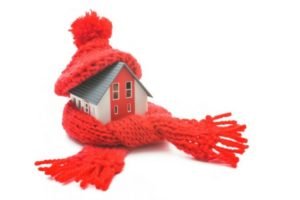Make a Winter Home Checklist and Make Sure You Check it Twice
Santa’s not the only one this winter that has a long list that he needs to check twice to make sure that he doesn’t forget anything. Homeowners in Apple Valley, MN should follow the same approach as the mercury drops and the winter chill sets in.
Here is a checklist to follow to make sure that your home is warm, dry and safe for the duration of the winter, no matter the weather outside.
De-Icing Salt is a Must
 With very chilly temps in the winter and unfavorable weather, layers of slick ice on your driveway and walkway are a reality.
With very chilly temps in the winter and unfavorable weather, layers of slick ice on your driveway and walkway are a reality.
These can be particularly dangerous if you don’t treat them before you step on them. Make sure that you stock up on de-icing salt before it gets really cold outside.
Keep it somewhere handy (like the front porch) so that you don’t have to wander too far to get it after a storm.
Take small steps and spread in a wide fan fashion so that you don’t slip and fall. The salt (or regular sand) may also come in handy if you have outdoor pipes. Many times, these can become frozen, clogging up your home's entire plumbing system.
Carbon Monoxide and Smoke Detector Testing
 Don’t risk your property or your family’s safety by ignoring the importance of carbon monoxide and smoke detector testing.
Don’t risk your property or your family’s safety by ignoring the importance of carbon monoxide and smoke detector testing.
Ensure that they are in good condition and that they have new batteries (it is smart to replace them once a year).
Remove the caps and vacuum out the inside. Dust and spider webs will build up over time, making it hard for them to work well.
Never paint over them either, even if they don’t match your décor. Paint will block the sensors. As an extra safety step, store a fire extinguisher on each level of your home within easy reach.
Ventilation and Insulation
 The walls are responsible for keeping most of the heat in your home (not the windows and doors as is commonly thought).
The walls are responsible for keeping most of the heat in your home (not the windows and doors as is commonly thought).
Approximately 30-35 percent of a home’s heat loss will escape through walls that aren’t insulated. That’s why is it is so essential to have intact, thick insulation.
Wondering if your home is at risk? Do you feel drafts? Do you feel like some rooms are colder than others, even though the heat is set the same? Do the floors and ceilings feel cold to the touch?
It’s worth calling for a professional opinion. Ventilation is key in the winter as well, although not for the same reasons as in the summer. In the winter, you need heat to be evenly distributed through your home. Areas that are damp won’t heat effectively. For the best results, rely on a ventilation system to move the air well.

